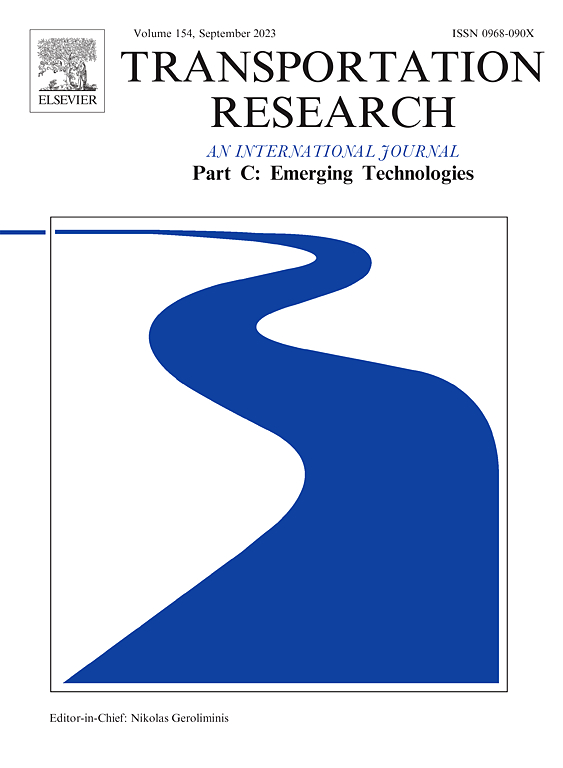Decoding pedestrian stress on urban streets using electrodermal activity monitoring in virtual immersive reality
IF 7.6
1区 工程技术
Q1 TRANSPORTATION SCIENCE & TECHNOLOGY
Transportation Research Part C-Emerging Technologies
Pub Date : 2025-02-01
DOI:10.1016/j.trc.2024.104952
引用次数: 0
Abstract
The pedestrian stress level is shown to significantly influence human cognitive processes and, subsequently, decision-making, e.g., the decision to select a gap and cross a street. This paper systematically studies the stress experienced by a pedestrian when crossing a street under different experimental manipulations by monitoring the Electrodermal Activity (EDA) using the Galvanic Skin Response (GSR) sensor. To fulfil the research objectives, a dynamic and immersive virtual reality (VR) platform was used, which is suitable for eliciting and capturing pedestrian’s emotional responses in conjunction with monitoring their EDA. A total of 171 individuals participated in the experiment, tasked to cross a two-way street at mid-block with no signal control. Mixed effects models were employed to compare the influence of socio-demographics, social influence, vehicle technology, environment, road design, and traffic variables on the stress levels of the participants. The results indicated that having a street median in the middle of the road operates as a refuge and significantly reduced stress. Younger participants (18–24 years) were calmer than the relatively older participants (55–65 years). Arousal levels were higher when it came to the characteristics of the avatar (virtual pedestrian) in the simulation, especially for those avatars with adventurous traits. The pedestrian location influenced stress since the stress was higher on the street while crossing than waiting on the sidewalk. Significant causes of arousal were fear of accidents and an actual accident for pedestrians. The estimated random effects show a high degree of physical and mental learning by the participants while going through the scenarios.
求助全文
约1分钟内获得全文
求助全文
来源期刊
CiteScore
15.80
自引率
12.00%
发文量
332
审稿时长
64 days
期刊介绍:
Transportation Research: Part C (TR_C) is dedicated to showcasing high-quality, scholarly research that delves into the development, applications, and implications of transportation systems and emerging technologies. Our focus lies not solely on individual technologies, but rather on their broader implications for the planning, design, operation, control, maintenance, and rehabilitation of transportation systems, services, and components. In essence, the intellectual core of the journal revolves around the transportation aspect rather than the technology itself. We actively encourage the integration of quantitative methods from diverse fields such as operations research, control systems, complex networks, computer science, and artificial intelligence. Join us in exploring the intersection of transportation systems and emerging technologies to drive innovation and progress in the field.

 求助内容:
求助内容: 应助结果提醒方式:
应助结果提醒方式:


